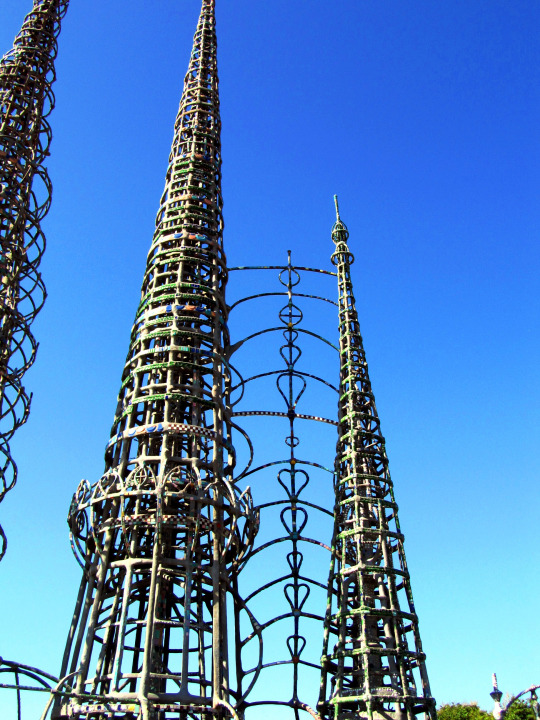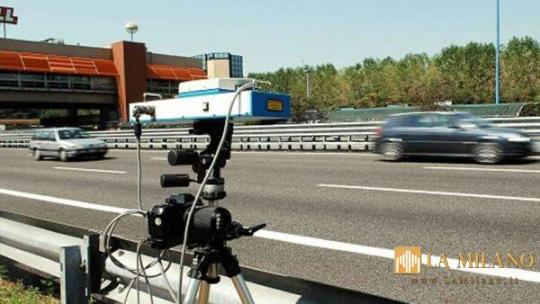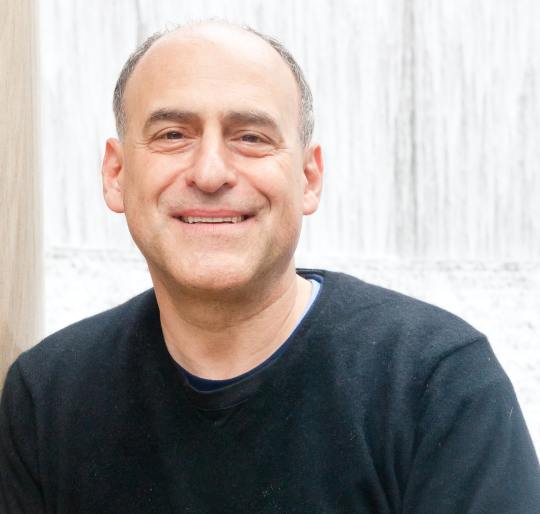#sabato rodia
Text









The Watts Riots began in the Watts area of Los Angeles on August 11, 1965.
#Tor Towers of Simon Rodia#Watts Towers#1765 E. 107th Street#Sabato Rodia#Watts Riots#started#11 August 1965#anniversary#US history#travel#USA#summer 2011#LA#Los Angeles#public art#tourist attraction#landmark#mosaic#original photography#vacation#California#West Coast#detail#cityscape#architecture
1 note
·
View note
Text
Chi è analfabeta sa disegnare?
Chi è analfabeta sa disegnare? Ci avete chiesto una cosa molto interessante, che merita una riflessione accurata. E’ naturale chiedersi se una persona che non sa leggere e scrivere possa saper disegnare, e in questo articolo cercheremo di spiegarti quali sono le correlazioni tra scrivere e disegnare, dandoti una risposta esaustiva.
Per prima cosa però, analizziamo il fenomeno.
Quanti analfabeti…

View On WordPress
#analfabetismo e disegno#chi è analfabeta sa disegnare?#sabato rodia#saper disegnare#saper leggere#saper scrivere#The Beatles
0 notes
Text
Messina: i controlli con autovelox e dispositivo scout da oggi sino a sabato 9 marzo

Messina: i controlli con autovelox e dispositivo scout da oggi sino a sabato 9 marzo.
Servizi di controllo della velocità con autovelox, nell'ottica della prevenzione dei sinistri stradali, e con il dispositivo "scout", per il rilevamento delle infrazioni al Codice della Strada in materia di divieti di sosta.
Il Comando del Corpo di Polizia municipale ha disposto la prosecuzione dei servizi di controllo della velocità con autovelox, nell'ottica della prevenzione dei sinistri stradali, e con il dispositivo "scout", per il rilevamento delle infrazioni al Codice della Strada in materia di divieti di sosta.
I servizi sono effettuati da oggi, lunedì 4 marzo, sino a sabato 9 marzo 2024, alternativamente sugli assi viari più interessati dal traffico.
Il controllo con autovelox interesserà la Strada Statale 114 a Giampilieri; la Strada Statale 113 a Mortelle, Spartà, San Saba, Rodia e Casabianca; i viali Gazzi e Boccetta; e le vie Garibaldi, Maregrosso/Franza e Consolare Pompea.
Il dispositivo "scout" monitorerà la Strada Statale 114, nel tratto tra il bivio Zafferia e la rotatoria "Alfio Ragazzi"; via Marco Polo; viale S. Martino, da villa Dante a piazza Cairoli; via Industriale (tratto Samperi – S. Cecilia); via La Farina, tra le vie S. Cosimo e Cannizzaro; piazza Duomo (isola pedonale); viale della Libertà, tra Giostra e Prefettura e tra rotatoria Annunziata e Giostra; viale Boccetta, dal corso Garibaldi al viale Principe Umberto; corso Garibaldi, nel tratto Prefettura – Cairoli; via T. Cannizzaro, tra il corso Cavour e il viale Italia; e piazza della Repubblica.
Il Comando della Polizia municipale raccomanda agli automobilisti il rispetto dei limiti di velocità su tutte le strade, ricordando che l'eccesso di velocità è tra le cause, che incidono maggiormente sulla gravità dei sinistri stradali, e l'osservanza delle regole che vietano la sosta, in particolare in doppia fila, sul marciapiede, nelle corsie preferenziali, pista ciclabile e attraversamenti pedonali.
...
#notizie #news #breakingnews #cronaca #politica #eventi #sport #moda
Read the full article
0 notes
Video
youtube
The Towers (1957) | Building The Watts Towers created by Sabato "Simon" Rodia
16 notes
·
View notes
Photo


Man with a plan
It just may be one of the more interesting stories you never heard;
Italian immigrant Sabato “Sam” Rodia, using simple hand tools and discarded materials - broken dishes, rocks, seashells, shards of pop bottles, etc., etc - spent 33 years (1921-55) creating the largest folk-art structure in the world built by on individual - the wonder known today as the Watts Towers, in L.A.
The project consists of 17 sculptural forms. The largest of the three main towers is 99 1/2 feet tall. No bolts, rivets, welds or drawing board designs. Also, Sam used no scaffolding. He simply climbed the structure every day and went to work - after his daytime job.
5 notes
·
View notes
Text
Outsider Inspirations
Simon Rodia’s Watt’s Towers

Sabato “Simon” Rodia (1879 – 1965) emigrated from Italy to the United States when he was fourteen years old and eventually settled in California where he worked in masonry and construction. Beginning in 1921, Rodia spent three decades building seventeen structures made of steel and mortar and mosaicked them in glass, tile, and seashells. Rodia constructed all the towers without machinery; the tallest among them is 99 ½ feet tall.

In 1956, the City of Los Angeles considered the space to be a hazard and ordered for it to be destroyed. A committee of actors, architects, artists, and engineers purchased the property and negotiated with the city to preserve the work. The committee operated the Towers independently until 1975, when the City of Los Angeles, and later the State of California, assisted in the preservation as the site became famous. Currently, the Watts Towers are under the care of the Los Angeles County Museum of Art (LACMA).

Isaiah Zagar visited Watts Towers in 1987.
“Outsider Inspirations: The Influence of Art Environments on Isaiah Zagar” is on view at Philadelphia’s Magic Gardens until August 26, 2018.
6 notes
·
View notes
Photo

Italian-American artist, Sabato "Simon" Rodia (1879 – 1965)
Digital illustration.
0 notes
Text
0 notes
Text
0 notes
Photo










The Watts Riots began in the Watts area of Los Angeles on August 11, 1965.
#Tor Towers of Simon Rodia#Watts Towers#1765 E. 107th Street#Sabato Rodia#Watts Riots#started#11 August 1965#anniversary#US history#travel#USA#summer 2011#LA#Los Angeles#public art#tourist attraction#landmark#mosaic#original photography#vacation#California#West Coast#detail
1 note
·
View note
Text
Messina, Polizia Municipale: controlli con autovelox e dispositivo scout fino a sabato 18 novembre

Messina, Polizia Municipale: controlli con autovelox e dispositivo scout fino a sabato 18 novembre.
Il Comando del Corpo di Polizia Municipale di Messina ha disposto la prosecuzione dei servizi di controllo della velocità con autovelox, nell'ottica della prevenzione dei sinistri stradali, e con il dispositivo "scout", per il rilevamento delle infrazioni al Codice della Strada in materia di divieti di sosta.
I servizi saranno effettuati fino a sabato 18 novembre 2023, alternativamente sugli assi viari più interessati dal traffico. Il controllo con autovelox interesserà la Strada Statale 114 a Giampilieri e Galati; la Strada Statale 113 a Mortelle, Spartà, San Saba, Rodia e Casabianca; i viali Boccetta e Gazzi; e le vie Garibaldi e Maregrosso/Franza.
Il dispositivo "scout" monitorerà la Strada Statale 114, nel tratto tra il bivio Zafferia e la rotatoria "Alfio Ragazzi"; via Marco Polo; viale S. Martino, da villa Dante a piazza Cairoli; via Industriale (tratto Samperi – S. Cecilia); via La Farina, tra le vie S. Cosimo e Cannizzaro; piazza Duomo (isola pedonale); viale della Libertà, tra Giostra e Prefettura e tra rotatoria Annunziata e Giostra; viale Boccetta, dal corso Garibaldi al viale Principe Umberto; corso Garibaldi, nel tratto Prefettura – Cairoli; via T. Cannizzaro, tra il corso Cavour e il viale Italia; e piazza della Repubblica.
Il Comando della Polizia Municipale raccomanda agli automobilisti il rispetto dei limiti di velocità su tutte le strade, ricordando che l'eccesso di velocità è tra le cause, che incidono maggiormente sulla gravità dei sinistri stradali, e l'osservanza delle regole che vietano la sosta, in particolare in doppia fila, sul marciapiedi, nelle corsie preferenziali, pista ciclabile e attraversamenti pedonali....
#notizie #news #breakingnews #cronaca #politica #eventi #sport #moda
Read the full article
0 notes
Photo

Los Angeles. EUA. #LosAngeles is full of amazing landmarks. The #WattsTower, aka Towers of Simon Rodia, or Nuestro Pueblo, is a U.S. National Register of Historic Places and was built by Sabato "Simon" Rodia over a span of 33 years. This piece of art work is a collection of 17 sculptural towers that are interconnected and is considered outsider art and Italian-American naïve art. photo credit: @rockitnrebel #Watts #LosAngeles #laart #LAHistory #lalandmarks #SouthLA Fonte:@lamag (em Tijuca, Rio De Janeiro, Brazil) https://www.instagram.com/p/B9naGplFqqH/?igshid=h6dk92jk57fb
0 notes
Text
Kavita Persaud - Watts Towers and Stephen Koplowitz
Watts Towers

Image from discoverlosangeles.com
“Watts Towers” also referred to as “Towers of Simon Rodia” or “Nuestro Pueblo” is an art piece of seventeen containing sculptural towers, architectural structures, individual sculptural features and mosaics, all created by Sabato “Simon” Rodia in his old residential property. Rodia, an Italian immigrant, construction worker and tile mason not an artist, spent 33 years constructing this sculpture that would later become a National Historic Landmark. Rodia’s work was greatly impacted by the surrounding environment in his use of materials as most of his material was self-acquired from the neighborhood and donated by neighbors.
Stephen Koplowitz

Image from coursera.org
It’s no surprise that Stephan Koplowitz is on the list of people of interest for this class because he specializes in site-specific performances that draw on his skills as a choreographer and media artist. As an artist, Koplowitz aims to shape the perception of place, site, and scale through emphasis on the human condition. His most recent work titled, “The Northfield Experience,” is a series of ten different art pieces or performances that called locals to experience the town with new eyes.
0 notes
Text
The Watts Towers - Futuristic Architecture in Los Angeles

The Watts Towers - is a vivid example of the fact that in the city of mirror skyscrapers it is interesting not exactly the skyscrapers, moreover the one made not from mirror images, but the one made almost from trash/improvised materials. The collection of 17 communicating towers up to 99 feet high resembles the futuristic structures of Gaudi - which is not accidental: their creator, Sabato Rodia, came from Italy and managed to bring the sunny mood of his homeland to Los Angeles.
A bit of history
Sabato Rodia was born in the Italian town of Serino and moved with his family to the States at the age of 15. He spent his youth in subsidiary work, and maturated working on quarries and as a tracker. In 1921, Rhodia bought a piece of land on an abandoned territory on the outskirts of Los Angeles and began construction of a building he named in Spanish - Nuestro Pueblo ("our village"). Howewer it wasn’t liking like any village in what Sabato's neighbors thought it should look like, it was not very unusual: a strange steel wrinkled structures began to appear on the site, decorated with improvised materials: bottle bottoms, glass fragments, ceramic tiles and other stuff. It is clear that conservative provincials did not like the exercises of the Italian emigrant, therefore the creation was often broken. However, Rhodia did not despair: "I want to build something big and I will do it." So on 107th Street in Los Angeles, one of the most recognizable monuments of the city appeared.
The construction of Watts towers took 33 years, as Rhodia turned to creativity exclusively in his spare time.
In 1955 Rodia finished the construction of the towers, fell into some depression from the fact that people were not very interested in his brainchild (and if they were interested, then to break something), he wrote off the site for a neighbor and went to live in another city. The structure gradually fell into decay, until the City Hall of Los Angeles decided to level it with the ground. However, representatives of bohemia stood up for the towers: the actors and directors bought the site and organized a public committee. In 1975, towers were donated to Los Angeles, and three years later - transferred to California.
What to see
Towers Watts – is a sample of futuristic architecture with a touch of ethno and naive almost in the heart of Los Angeles. Seventeen designs of different heights have romantic names (such as "Marco Polo Ship") and communicate with each other. Inside the tower is hollow, which allows you to properly consider the details of load-bearing structures and to marvel at the genius of this architect not by education, but by calling. Particular attention should be paid to the details of the decorations of the towers: the bearing beams are curly wound around the wire, glass, tiles, ceramics, pieces of metal and shells are everywhere. By the way, in search of the material Rhodia passed more than 19 miles on the cross-country, carefully looking at his feet - that's what passion means!
A variety of exhibitions and cultural events are held near the Watts towers of the same name, with a plan that can be previewed in advance on the center's website.

1 note
·
View note
Photo

Staring up at the tall, ceramic-plate-plastered, broken-bottle-encrusted Watts Towers, it’s hard to imagine that they were built by a single pair of hands. Sabato or Sam or Simon Rodilla must have been 4 feet 10 inches of unalloyed determination. Over the course of 34 years he offered little to no explanation for his restless toiling, insisting simply that he was “gonna do something.” Well, he definitely delivered.
But it has been almost 65 years since the Italian immigrant abandoned his project, and now the colorful, conical constructions, situated firmly on their small plot of land in the center of the city, seem to be the remnants of a whimsical fantasyland—as if taken from a deserted amusement part or an unfinished Dr. Seuss book. If you wander around the towers, which are currently closed off by a black tarp and gridded white fence, you’ll find a series of signs narrating the evolution of the landmark from its conception to its conservation. One of the placards explains to passersby why restoration of the site is so important: “The basic philosophy for these efforts is simple - preserve the legacy of Simon Rodia.”
But I wonder how essential it is to “preserve the legacy” of a particularly ambitious cement finisher from the 1940s. According to Stephanie and Mary Jane—two high schoolers sitting on the amphitheater steps who were kind enough to take a break from their science homework and talk with us—the towers seem to serve a more palpable, more powerful purpose.
Stephanie and Mary Jane come to the funnel-shaped structures everyday to finish their schoolwork. But the area is more than an after-school spot. “This is the heart of the city,” Stephanie explained. In fact, just over a month ago the body of Nipsey Hussle, a beloved rapper, activist, and Los Angeles native who was fatally shot in March, passed by Watts Towers during his funeral procession. “I think a lot of people felt peace here,” Stephanie continued, describing how the whole community—sans any hostility or violence—united to mourn the rapper’s death.
From what I gathered after our short Thursday visit, the Watts Towers are more than just a tourist-tempting, sightseer-seducing attraction created by one particularly persistent man. They are not here, as the sign suggests, to keep the fabled memory of Simon Rodia alive and well. Instead, the community has transformed the mosaic meshwork that pierces the sky into so much more.
“Do you know what the bird means?” Stephanie asked us with a smile during our conversation, pointing to the white, bird-shaped kite attached to one of the towers that was swinging in the rainy-day wind. When we looked at her with silent stares, she simply responded: “Peace. It represents peace.”
- Nikki R.
0 notes

